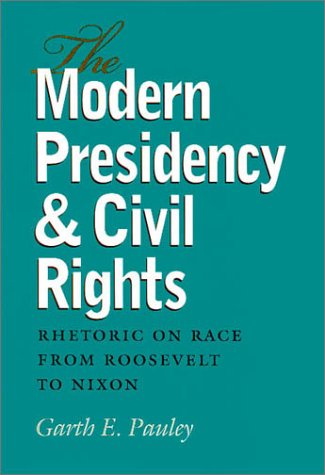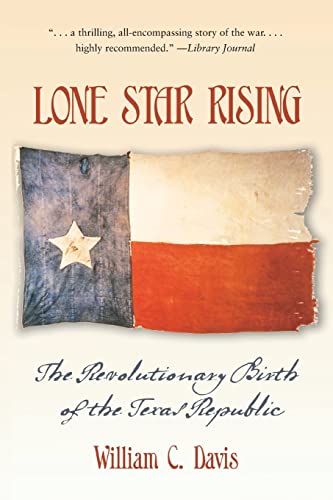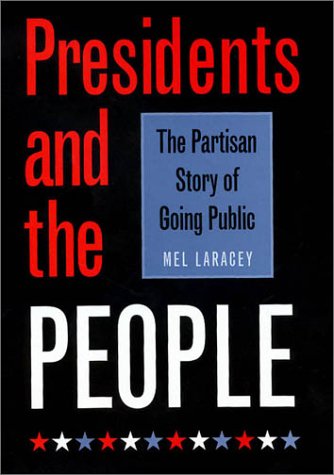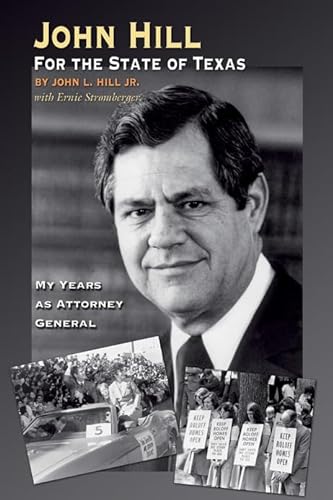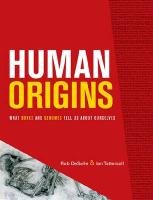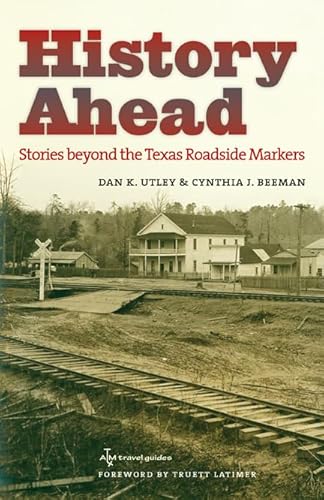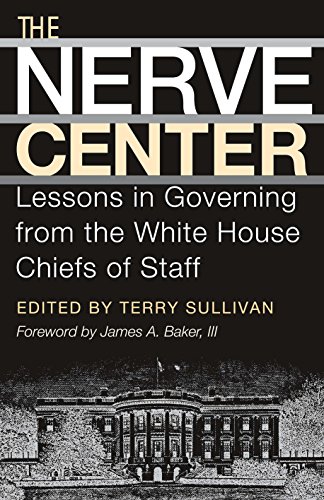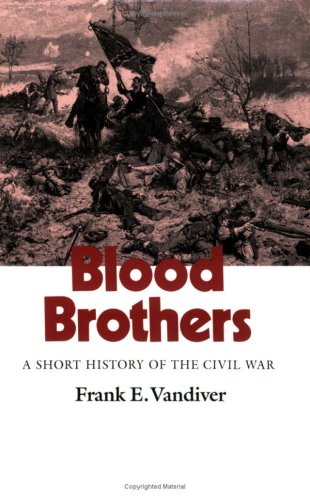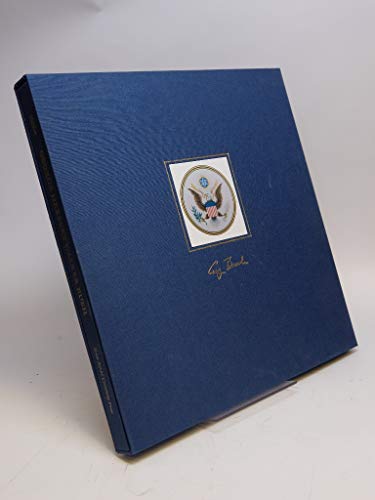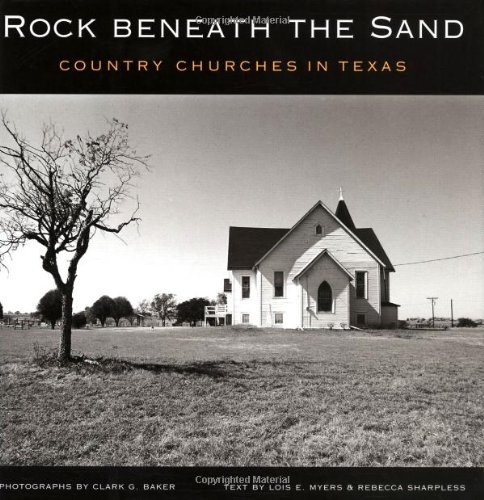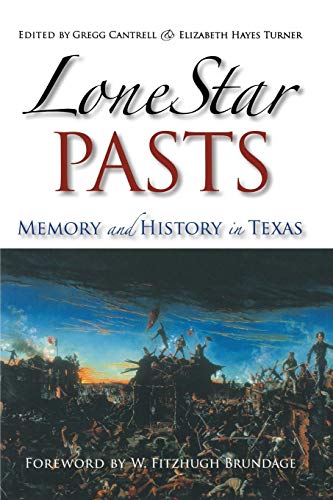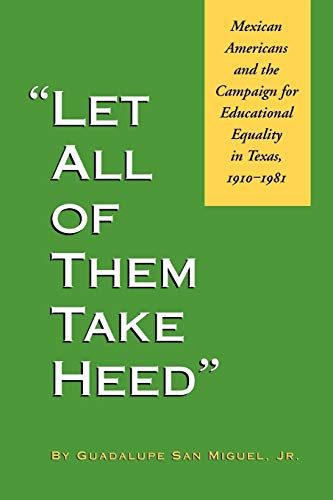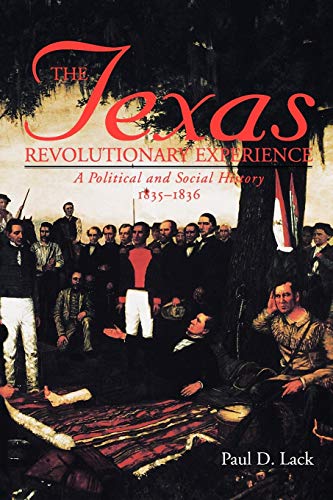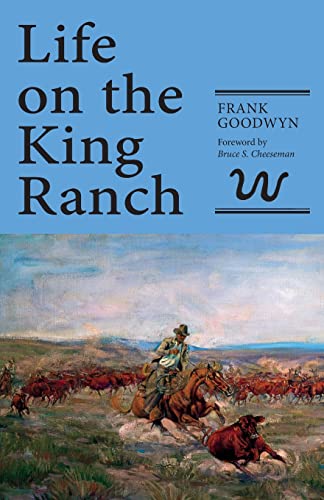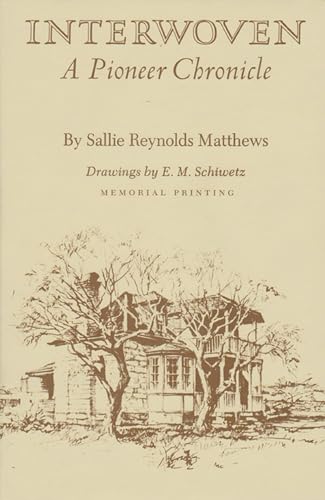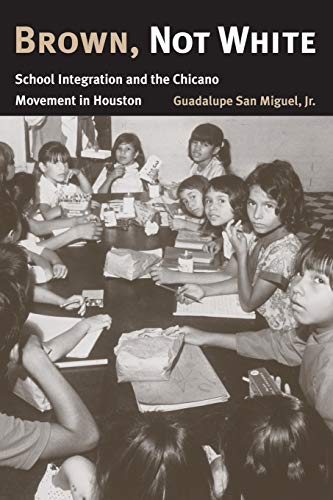texas a amp m university press (364 results)
Product Type
- All Product Types
- Books (364)
- Magazines & Periodicals
- Comics
- Sheet Music
- Art, Prints & Posters
- Photographs
- Maps
-
Manuscripts &
Paper Collectibles
Condition
Binding
Collectible Attributes
- First Edition (49)
- Signed
- Dust Jacket
- Seller-Supplied Images (4)
- Not Printed On Demand
Free Shipping
Seller Location
Seller Rating
-
The Modern Presidency and Civil Rights: Rhetoric on Race from Roosevelt to Nixon (Volume 3) (Presidential Rhetoric and Political Communication)
Published by Texas A&M University Press, 2001
ISBN 10: 1585441074ISBN 13: 9781585441075
Seller: Ergodebooks, Houston, TX, U.S.A.
Book
Hardcover. Condition: Good. Every president since Franklin Roosevelt has confronted civil rights issues during his tenure in the White House, and most have faced intense demands to speak publicly about the nation's racial problems and possible solutions. Indeed, modern American presidents have become a major focal point for the civil rights struggle.In The Modern Presidency and Civil Rights, Garth E. Pauley examines modern presidents' communicative and symbolic involvement in these matters, focusing on four crucial speeches, the circumstances surrounding them, and their effect on public attitudes and policy.Pauley's perspective is both historical and critical. It explores the pattern of presidential discourse on race in the modern era and considers the promise and limitations of presidential talk with regard to civil rights. The four significant episodes of American presidential speech Pauley examines are: Harry Truman's address of June 29, 1947, to the NAACP; Dwight Eisenhower's national address on September 24, 1957, following the integration crisis at Little Rock; John F. Kennedy's speech on June 11, 1963, labeling civil rights as primarily a moral issue; and Lyndon Johnson's voting rights message of March 15, 1965. Historical background is provided by a discussion of Roosevelt's racial stance.Pauley's analysis is guided by several assumptions about the presidency, civil rights, and rhetoric, beginning with the assumption that presidential rhetoric matters. Pauley examines the role of rhetoric in leadership, policy making, and the political meanings and interpretations that form the political culture. Following in the tradition of his discipline, Pauley gives both close analysis of the speech text itself and consideration of the historical situation surrounding the speech.
More buying choices from other sellers on AbeBooks
New offers from US$ 35.50
Used offers from US$ 9.53
Also find Hardcover
-
Lone Star Rising: The Revolutionary Birth of the Texas Republic
Published by Texas A&M University Press, 2006
ISBN 10: 1585445320ISBN 13: 9781585445325
Seller: Ergodebooks, Houston, TX, U.S.A.
Book
Softcover. Condition: Good. In the whirlwind of revolutions in the Americas, the Texas Revolution stands at the confluence of northern and southern traditions. On the battlefield and in the political aftermath, settlers from the United States struggled with those who brought revolutionary ideas from Latin America and arms from Mexico. In the midst of the conflict stood the Tejanos who had made Texas home for generations.This masterpiece of narrative and analysis, first published in hardback in 2004, brings the latest scholarship to bear on the oldest questions. Well-known characters such as Sam Houston, Stephen F. Austin, and General Santa Anna-and the cultures they represented-are etched in sharp and very human relief as they carve out the republic whose Lone Star rose in 1836 and changed the course of a continent.
More buying choices from other sellers on AbeBooks
New offers from US$ 23.58
Used offers from US$ 9.54
Also find Softcover
-
Presidents and the People: The Partisan Story of Going Public (Joseph V. Hughes Jr. and Holly O. Hughes Series on the Presidency and Leadership)
Published by Texas A&M University Press, 2002
ISBN 10: 1585441805ISBN 13: 9781585441808
Seller: Ergodebooks, Houston, TX, U.S.A.
Book
Hardcover. Condition: Good. 1. When the American president cannot get his way with Congress on something of great importance to him, he often appeals over the heads of Congress, directly to the American people. This kind of appeal and the frequent use of the media to generate support for presidential policies face criticism (especially from policy critics) as an unconstitutional means of subverting the executive-legislative power balance intended by the Constitution. Melvin C. Laracey, in this fascinating historical interpretation of presidential efforts to marshal public opinion in support of policy positions, challenges the notion that direct appeals are either recent or unconstitutional.Presidents and the People offers the first comprehensive study of presidential communication with the public on policy matters and of popular and elite attitudes toward going public. Laracey demonstrates that the practice did not begin with Roosevelts Fireside Chats, Kennedys televised press conferences, or Bill Clintons town meetings. Rather, historically, it has included earlier media such as presidentially sponsored newspapers. The relative absence of policy issues from earlier presidential speeches represented not an aversion to going public, but a preference for the printed word in a society where speeches reached only the immediate audience.Laracey argues that the extent to which presidents have gone public is a function of their adherence to one of two competing conceptions of the presidency, both of which are constitutionally based. His nuanced view of the presidency results in an original typology that he uses to analyze both the means and the normative bases for going public. He challenges the view of the Federalist Papers as pro-Congress at the cost of a policy-oriented, public-referring presidency. Tracing the sometimes thinly veiled exercise of public appeals through presidential newspapers, he concludes that going public is not a modern manifestation, but rather the modern triumph of one view of the proper place of the presidency in the constitutional order.
-
John Hill for the State of Texas: My Years as Attorney General
Published by Texas A&M University Press, 2008
ISBN 10: 1603440720ISBN 13: 9781603440721
Seller: Ergodebooks, Houston, TX, U.S.A.
Book
Hardcover. Condition: Good. Illustrated. During his distinguished career, John L. Hill Jr. served as secretary of state, attorney general, and chief justice of the state supreme court-the only person to hold all three state offices. Hill's office played a significant role in vastly expanding Texas consumer protections, waging war against wholesale rate increases by AT&T/Southwestern Bell; and resolving the disposition of Howard Hughes's fabled estate to bring tens of millions of dollars into Texas coffers. Before Hill's death in July 2007, Ernie Stromberger, journalist and Hill's longtime friend, worked with him to craft this first-person narrative.
More buying choices from other sellers on AbeBooks
New offers from US$ 45.71
Used offers from US$ 9.54
Also find Hardcover
-
Human Origins: What Bones and Genomes Tell Us about Ourselves (Volume 13) (Texas A&M University Anthropology Series)
Published by Texas A&M University Press, 2012
ISBN 10: 1603445188ISBN 13: 9781603445184
Seller: Ergodebooks, Houston, TX, U.S.A.
Book
Softcover. Condition: Good. Reprint. Ever since the recognition of the Neanderthals as an archaic human in the mid-nineteenth century, the fossilized bones of extinct humans have been used by paleoanthropologists to explore human origins. These bones told the story of how the earliest humans-bipedal apes, actually-first emerged in Africa some 6 to 7 million years ago. Starting about 2 million years ago, the bones revealed, as humans became anatomically and behaviorally more modern, they swept out of Africa in waves into Asia, Europe and finally the New World.Even as paleoanthropologists continued to make important discoveries-Mary Leakeys Nutcracker Man in 1959, Don Johansons Lucy in 1974, and most recently Martin Pickfords Millennium Man, to name just a few-experts in genetics were looking at the human species from a very different angle. In 1953 James Watson and Francis Crick first saw the double helix structure of DNA, the basic building block of all life. In the 1970s it was shown that humans share 98.7% of their genes with the great apes-that in fact genetically we are more closely related to chimpanzees than chimpanzees are to gorillas. And most recently the entire human genome has been mapped-we now know where each of the genes on the chromosomes that make up DNA is located on the double helix.In Human Origins: What Bones and Genomes Tell Us about Ourselves, two of the worlds foremost scientists, geneticist Rob DeSalle and paleoanthropologist Ian Tattersall, show how research into the human genome confirms what fossil bones have told us about human origins. This unprecedented integration of the fossil and genomic records provides the most complete understanding possible of humanitys place in nature, its emergence from the rest of the living world, and the evolutionary processes that have molded human populations to be what they are today.Human Origins serves as a companion volume to the American Museum of Natural Historys new permanent exhibit, as well as standing alone as an accessible overview of recent insights into what it means to be human.
-
History Ahead: Stories beyond the Texas Roadside Markers (Texas A&M Travel Guides)
Published by Texas A&M University Press, 2010
ISBN 10: 1603441514ISBN 13: 9781603441513
Seller: Ergodebooks, Houston, TX, U.S.A.
Book
No binding. Condition: Good. 1. More than 13,000 historical markers line the roadsides of Texas, giving drivers a way to sample the stories of the past. But these markers tell only part of the story.In History Ahead, Dan K. Utley and Cynthia J. Beeman introduce readers to the rich, colorful, and sometimes action-packed and humorous history behind the famous (Charles Lindbergh, Will Rogers, The Big Bopper, and jazz great Charlie Christian) and the not-so-famous (Elmer "Lumpy" Kleb, Don Pedro Jaramillo, and Carl Morene, the "music man of Schulenburg") who have left their marks on the history of Texas. They visit cotton gins, abandoned airfields, forgotten cemeteries, and former World War II alien detention camps to dig up the little-known and unsuspected narratives behind the text emblazoned on these markers.Written in an anecdotal style that presents the cultural uniqueness and rich diversity of Texas history, History Ahead includes nineteen main stories, dozens of complementary sidebars, and many never-before-published historical and contemporary photographs.History Ahead offers a rich array of local stories that interweave with the broader regional and national context, touching on themes of culture, art, music, technology, the environment, oil, aviation, and folklore, among other topics. Utley and Beeman have located these forgotten gems, polished them up to a high shine, and offered them along with convenient maps and directions to the marker sites.
More buying choices from other sellers on AbeBooks
New offers from US$ 23.78
Used offers from US$ 9.92
Also find Softcover
-
The Nerve Center: Lessons in Governing from the White House Chiefs of Staff (Joseph V. Hughes Jr. and Holly O. Hughes Series on the Presidency and Leadership)
Published by Texas A&M University Press, 2004
ISBN 10: 1585443492ISBN 13: 9781585443499
Seller: Ergodebooks, Houston, TX, U.S.A.
Book
Hardcover. Condition: Good. In what James A. Baker III has called the worst job in Washington, the chief of staff orchestrates the presidents conduct of the U.S. government. He holds the unique responsibility to magnify the time, reach, and voice of the president of the United States. You need a filter, a person that you have total confidence in who works so closely with you that in effect he is almost an alter ego, Gerald Ford has said. In this volume, resulting from the Washington Forum on the Role of the White House Chief of Staff held in 2000 in Washington, D.C., twelve of the fifteen men who have held the office of chief of staff discuss among themselves and with a select group of participants the challenges, achievements, and failures of their time in that role. Their purpose is to find lessons in governing that will help future chiefs of staff prepare to assume the office and organize the staffs they will lead. These pages of frank and uncensored discussion present in straightforward question-and-answer format the voices of the chiefs of staff themselves concerning the transition from campaign to governance, with its reorganization and refocusing of the presidents team, the reelection drive four years later, and eventually, the closing out of an administration. The group also addresses the place of the White House chief of staff within the larger governing community of the Executive Branch, Congress, interest groups, and the press. The American White House sits at the nerve center of world history, and at the core of this nerve center, a massive bureaucratic operation exists to process the flow of information and policy. The White House chief of staff manages that operation. So important has that office become, that to ignore its requirements risks presidential fate itself and indeed, the fate of the republic.
-
Blood Brothers: A Short History of the Civil War (Volume 26) (Williams-Ford Texas A&M University Military History Series)
Published by Texas A&M University Press, 1992
ISBN 10: 0890965242ISBN 13: 9780890965245
Seller: Ergodebooks, Houston, TX, U.S.A.
Book First Edition
Softcover. Condition: Good. First Edition. Brothers by blood before the war; brothers inblood after. The blood mingled in the Civil Was became the symbol and perverse source of indissoluble union between two sections, two ways of life, two visions of the future, and even two revolutions.In riveting detail, veteran Civil War historian Frank E. Vandiver recounts the campaigns and major battles of the first war of the Industrial Revolution, with its machinery, firepower, and engineering beyond imagination. With provocative insight, he traces a picture of the war as rooted in the character and vision of its two leaders and their two sectional revolutions.In the North, Abraham Lincoln built a massive war effort by expanding executive authority, sometimes in ways beyond the Constitution. Not only emancipation, but also new monetary policies, new forms of commercial organization and production, and new ways of raising and commanding armies made a different United States, shaped for world power.In the service of the Confederacy, Jefferson Davis, a states righter, became a Confederate nationalist. Keeping up the fight forced him and many Southerners to accept both a centralization and an industrialization they hated. When the dream was lost and the country gone, vestiges of this revolution would make the Southern system compatible with the new economic, social, and political system that had emerged in the North. The South might look back fondly, but it was readier than it knew for what would come: a new union, one and finally indivisible.
More buying choices from other sellers on AbeBooks
New offers from US$ 14.32
Used offers from US$ 10.01
Also find Softcover First Edition
-
Fred Gipson at Work
Published by Texas A&M University Press, 1990
ISBN 10: 0585174334ISBN 13: 9780585174334
Seller: Ergodebooks, Houston, TX, U.S.A.
Book
Hardcover. Condition: Good. 1. Book by Lich, Glen E.
More buying choices from other sellers on AbeBooks
New offers from US$ 42.00
Used offers from US$ 10.04
Also find Hardcover
-
Going to Windward: A Mosbacher Family Memoir
Published by Texas A&M University Press, 2010
ISBN 10: 1603442219ISBN 13: 9781603442213
Seller: Ergodebooks, Houston, TX, U.S.A.
Book First Edition
Hardcover. Condition: Good. First Edition. In a lifetime filled with exhilarating successes, heartbreaking failures, and tragic personal loss, Robert A. Mosbacher Sr. proved himself adept at navigating in calm seas and high winds alike. Whether besting the stiffest of national and international competition in a diverse array of amateur sailing championships over the course of a half century, or helping to chart his candidates course across the American political landscape on the way to the White House in 1989, Mosbacher was never one to turn his back on any goal to which he had dedicated himself. Now, in this informative, entertaining, and deftly written memoir composed with the assistance of writer and trusted friend James G. McGrath, Mosbacher chronicles, in his own words, a life well spent.His perspective informed by everything from his fathers meager childhood and remarkable successes as a trader on the New York Curb Exchange to his own three years of service as Secretary of Commerce in George H. W. Bushs administration, Mosbacher, the grandson of immigrants, possessed a distinctive vantage point on U.S. business and politics. In this volume of tightly woven, lively memories, he takes readers on an unforgettable ride with his father through the New York City of the 1930s, narrates his discovery of a huge natural gas field in the 1950s, and tells of his deepening involvement with the business and political power structures of Texas and the nation, beginning in the 1970s. Along the way, Mosbacher offers insights from family, business, and public life, with stories that engage, charm, and instruct.A must-read for Texas, political, business, and energy historians as well as general readers everywhere, Going to Windward is an American success story that will warm the heart and capture the imagination.
More buying choices from other sellers on AbeBooks
New offers from US$ 32.45
Used offers from US$ 10.18
Also find Hardcover First Edition
-
Murder and Mayhem: The War of Reconstruction in Texas (Volume 6) (Sam Rayburn Series on Rural Life, sponsored by Texas A&M University-Commerce)
Published by Texas A&M University Press, 2003
ISBN 10: 1585442801ISBN 13: 9781585442805
Seller: Ergodebooks, Houston, TX, U.S.A.
Book
Hardcover. Condition: Good. 1. In the states of the former Confederacy, Reconstruction amounted to a second Civil War, one that white southerners were determined to win. An important chapter in that undeclared conflict played out in northeast Texas, in the Corners region where Grayson, Fannin, Hunt, and Collin Counties converged. Part of that violence came to be called the Lee-Peacock Feud, a struggle in which Unionists led by Lewis Peacock and former Confederates led by Bob Lee sought to even old scores, as well as to set the terms of the new South, especially regarding the status of freed slaves. Until recently, the Lee-Peacock violence has been placed squarely within the Lost Cause mythology. This account sets the record straight. For Bob Lee, a Confederate veteran, the new phase of the war began when he refused to release his slaves. When Federal officials came to his farm in July to enforce emancipation, he fought back and finally fled as a fugitive. In the relatively short time left to his life, he claimed personally to have killed at least forty people-civilian and military, Unionists and freedmen. Peacock, a dedicated leader of the Unionist efforts, became his primary target and chief foe. Both men eventually died at the hands of each others supporters. From previously untapped sources in the National Archives and other records, the authors have tracked down the details of the Corners violence and the larger issues it reflected, adding to the reinterpretation of Reconstruction history and rescuing from myth events that shaped the following century of Southern politics.
More buying choices from other sellers on AbeBooks
New offers from US$ 27.54
Used offers from US$ 10.45
Also find Hardcover
-
George Herbert Walker Bush: A Photographic Profile
Published by Texas A&M University Press, 1997
ISBN 10: 0890967792ISBN 13: 9780890967799
Seller: Ergodebooks, Houston, TX, U.S.A.
Book First Edition
Hardcover. Condition: Good. First Edition. As forty-first president of the United States, George Herbert Walker Bush witnessed many great changes: the fall of the Berlin Wall; the first breath of freedom for millions of people around the world; and America's victory in the Cold War.However, President Bush left the White House with the hope that not all things change. Some important facets of American life would remain constant: "our belief in a strong defense, in strong families, and in leaving the world a better and more prosperous place for the young kids here today."During his terms as vice president and president, Bush met with people from world leaders to the everyday worker. Bush traveled to Poland to meet a shipyard worker who predicted Poland would be free and George Bush would be president. A few years later, he returned to a free Poland and met with the shipyard worker-cum-president Lech Walesa, with a million cheering Poles looking on.History was in the making in those years and David Valdez's camera recorded it. As the personal photographer for Bush's second term as vice president and four years as president, Valdez had a standing invitation to be present in meetings and personal private moments in Bush administration.George Herbert Walker Bush: A Photographic Profile chronicles the development of Bush's life and career, beginning with his childhood, military service, marriage, and early postings. Valdez presents in colorful and dramatic detail a behind-the-scenes look at life in the White House and offers intriguing glimpses into the personal side of Bush's presidency. Since President Bush rarely gave precious seconds of his time for posed photographs, a large portion of Valdez's photographs are candid, showing a president at work, rest, and play.This beautiful book records a momentous era in our nation's politics and offers an in-depth coverage of the life and times of George Bush, the president and the man.
More buying choices from other sellers on AbeBooks
New offers from US$ 28.45
Used offers from US$ 10.55
Also find Hardcover First Edition
-
The War in Chechnya (Volume 8) (Eugenia & Hugh M. Stewart '26 Series)
Published by Texas A&M University Press, 1999
ISBN 10: 089096856XISBN 13: 9780890968567
Seller: Ergodebooks, Houston, TX, U.S.A.
Book
Hardcover. Condition: Good. The recent war in Chechnya, despite all the media coverage, remains a confusing tangle for many people. The war was the result of many conflicting political, economic, judicial, and military issues that had been fermenting for decades. Only the most fundamental goals became clearly visible: for Moscow, the preservation of its territorial integrity; for Chechens, the struggle for national independence.In this carefully researched and extensively documented study, Stasys Knezys and Romanas Sedlickas examine the Chechnyan war from a military viewpoint. As they evenhandedly depict the strengths and weaknesses of both the Russians and Chechens, the authors consider how and why Russia, with one of the worlds largest armies, failed to subdue the Chechens, and how the Chechens fought among themselves, yet also fought off the Russian Goliath.One reason the Chechens had the success they did was the expansion of the relationship of politics and war to the triangle of politics, war, and terrorism. Knezys and Sedlickas examine this question: Is military terrorism . . . a new tactical element, ensuring the success of a small countrys resistance to a powerful army?The War in Chechnya does not answer all the questions raised by this war, but it presents comprehensive, objective, impartial information about the military strategy and nature and conduct of operations on both sides to allow the reader to begin to answer some of those questions. Military analysts and historians, political scientists, and Eastern European scholars will find The War in Chechnya an illuminating analysis of the military operations there and a valuable source of information for further studies.
More buying choices from other sellers on AbeBooks
New offers from US$ 38.78
Used offers from US$ 10.61
Also find Hardcover
-
Hells Islands: The Untold Story of Guadalcanal (Volume 11) (Williams-Ford Texas A&M University Military History Series)
Published by Texas A&M University Press, 2007
ISBN 10: 1585446165ISBN 13: 9781585446162
Seller: Ergodebooks, Houston, TX, U.S.A.
Book
Hardcover. Condition: Good. Illustrated. From August 1942 until February 1943, two armies faced each other amid the malarial jungles and blistering heat of Guadalcanal Island. The Imperial Japanese forces needed to protect and maintain the air base that gave them the ability to interdict enemy supply routes. The Allies were desperate to halt the advance of a foe that so far had inflicted crippling losses on the U.S. fleet at Pearl Harbor, then seized the Philippines, Wake Island, the Dutch East Indies, Guam, and other Allied territory. After months of relentless battle, the U.S. troops forced back the determined Japanese, providing what many historians believe was the decisive turning point in the Pacific theater of operations.Stanley Coleman Jersey, a medical air evacuation specialist in the South Pacific during World War II, has spent countless hours combing Australian, Japanese, and U.S. documents and interviewing more than 200 veterans of the Guadalcanal campaign, both Allied and Japanese.Beginning with the events that preceded the battle for Guadalcanal during the Australian defense of the southern Solomon Islands in late 1941, Jersey details the military preparations made in response to intelligence describing the creation of an enemy air base within striking distance of American supply lines and recounts the civilian evacuation that followed the Japanese arrival in New Guinea.With the stage set, he turns to the campaign itself, with particular emphasis on the combat during the critical period of August to December 1942. While Guadalcanal is his primary focus, Jersey also covers the roles played by forces occupying the other Solomon Islands, including the plight of construction laborers, air crews, and ground units.This book, chock-full of gripping battlefield accounts and harrowing first-person narratives, draws together for the first time Allied and Japanese perspectives on the bloody contest. It is certain to become an indispensable asset to historians of World War II.
More buying choices from other sellers on AbeBooks
New offers from US$ 35.53
Used offers from US$ 10.80
Also find Hardcover
-
Captive Warriors: A Vietnam POW's Story (Texas A & M University Military History Series 23) (Volume 23)
Published by Texas A&M University Press, 1992
ISBN 10: 0890964963ISBN 13: 9780890964965
Seller: Ergodebooks, Houston, TX, U.S.A.
Book First Edition
Hardcover. Condition: Good. Rod Keitz (illustrator). First Edition. "If hell is here on earth, it is located on an oddly shaped city block in downtown Hanoi, Vietnam," writes Sam Johnson, who lived in that hell for seven years.Col. Samuel R. Johnson, U.S. Air Force, was shot down in April, 1966, while flying his twenty-fifth mission over North Vietnam. Shortly after his capture and imprisonment in the infamous Hanoi Hilton, Colonel Johnson was labeled a diehard by his enemies. His creative and innovative resistance of prison authority earned him banishment to the high-security prison unit where, unknown to U.S. military intelligence, Ho Chi Minh kept the eleven prisoners believed to be a serious threat to his war efforts. For two years Johnson and the other ten endured leg irons, malnutrition, and appallingly primitive conditions while imprisoned in tiny cubicles built in the earthen-walled facility dug out of the center courtyard of North Vietnam's Ministry of Defense in downtown Hanoi.Captive Warriors is the story of Alcatraz, where courage and humor thrived amid the madness. It is the story of Colonel Johnson's seven-year battle for his life, limbs, and sanity. It is the story of the hundreds of captured warriors--American POWs--whose lives lay in the hands of angry and vengeful North Vietnamese captors. The book also chronicles America's trek into political confusion and chaos throughout the course of the Vietnam War.More than a story, Captive Warriors is a tribute to all the American prisoners of war who, without benefit of the conventional weapons of war, waged daily battles against an insidious enemy disdainful of the requirements of the Geneva Conventions and who, in the end, became the final pawn in the peace settlement that ended the longest war in American history.
-
Rock beneath the Sand: Country Churches in Texas (Volume 5) (Sam Rayburn Series on Rural Life, sponsored by Texas A&M University-Commerce)
Published by Texas A&M University Press, 2003
ISBN 10: 158544250XISBN 13: 9781585442508
Seller: Ergodebooks, Houston, TX, U.S.A.
Book First Edition
Hardcover. Condition: Good. First Edition. At the crossroads of Central Texas, cotton once ruled as king. Around this demanding monarch, numerous communities grew up and thrived. From the distant horizon, the communities were marked by church steeples stretching skyward. Today, cotton has disappeared from the land, and the communities too are largely gone. Only the churches remain-the rock beneath the sands of time.This powerfully illustrated book seeks to explain the staying power of these rural churches and to introduce the people who keep them alive while the surrounding communities have given way to the larger towns and cities nearby. Beyond the power of religion itself, the authors have uncovered the roles of geography, race, ethnicity, and family in giving life to these small churches.Authors Lois Myers and Rebecca Sharpless enhance our understanding of the interplay of religion and culture, the qualities of late twentieth-century rural life, and the continuing draw of the open country churches and their members in vivid black and white photographs.Churches featured in the volume include the oldest Norwegian Lutheran church in Texas, four African American Baptist churches organized soon after emancipation, white Southern Baptist churches, Protestant and Catholic churches founded by European and Mexican immigrants, and one union church that for most of the past century accommodated both Methodists and Baptists. Drawing on memories of longtime members, church minutes and histories, baptism records, and family histories, the authors collapse decades of tradition into the enchanting and informative pages of this book.
More buying choices from other sellers on AbeBooks
New offers from US$ 43.81
Used offers from US$ 10.93
Also find Hardcover First Edition
-
Lone Star Pasts: Memory and History in Texas (Elma Dill Russell Spencer Series in the West and Southwest)
Published by Texas A&M University Press, 2006
ISBN 10: 158544569XISBN 13: 9781585445691
Seller: Ergodebooks, Houston, TX, U.S.A.
Book
Softcover. Condition: Good. The past has long fingers into the present, but they are not just the fingers of fact. How we remember the past is at least as important as the objective facts of that past. The memories used by a people to define itself have to be understood not just as (sometimes) bad history but also as historical artifacts themselves. Texas pasts are examined in this groundbreaking volume, featuring chapters by a wide range of scholars.Current historians views of Texas in the nineteenth century and especially the significance of the Alamo as a site of memory in architecture, art, and film across the years comprise a major element of this volume. Other nineteenth-century historical events are also examined through their memorializations in the twentieth century: the construction of Civil War monuments by the United Daughters of the Confederacy, public and private Juneteenth celebrations, and the Tejano memorial on the Capitol grounds commemorating the history of Mexicans in Texas. Twentieth-century chapters include collective memories and meaning attached to the Ku Klux Klan, the significance of the civil rights movement in the eyes of different generations of Texans, and the lasting (or fading) Texan memories of Lyndon Baines Johnson.The volume editors offer these studies as a model of how Texas historians can begin to incorporate memory into their work, as historians of other regions have done. In the process, they offer a more nuanced and even a more applied version of Texas history than many of us learned in school.
More buying choices from other sellers on AbeBooks
New offers from US$ 24.82
Used offers from US$ 11.39
Also find Softcover
-
Let All of Them Take Heed: Mexican Americans and the Campaign for Educational Equality in Texas, 1910-1981 (Reville Book)
Published by Texas A&M University Press, 2000
ISBN 10: 1585441104ISBN 13: 9781585441105
Seller: Ergodebooks, Houston, TX, U.S.A.
Book
Softcover. Condition: Good. The Mexican American community's relationship with the Anglodominated public school system has been multifaceted, complex, and ambiguous to say the least.On one level, an organized community has consistently struggled for equality in the existing educational institutions. Its story, although full of crushed hopes and legal frustrations, is imbued with a sense of accomplishment. At another level, individual Mexican Americans who have attended segregated public schools over the years also have a complex and diverse story to tell. For some, there are fond memories of school activities gone by. For others, the school years have been negative in general_children have been victims of humiliating and depressing incidents of racial discrimination and social ostracism.Texas' public school system is of particular historical interest because of the state's record, according to Guadalupe San Miguel, for providing the least amount of public education for Mexican Americans while fiercely defending its record of inferior and separate schooling. Additionally, Texas was the first state in which Mexican Americans organized to seek educational equality.In "Let All of Them Take Heed," first published in 1987 and one of the earliest books to focus on this plight of the Hispanic community, San Miguel traces the Mexican American quest for educational equality in Texas over a period of fifty years. In describing this struggle over the years, he emphasizes the socioeconomic factors affecting it and the strategies the Hispanic community used to reach its goals.
More buying choices from other sellers on AbeBooks
New offers from US$ 29.87
Used offers from US$ 11.43
Also find Softcover
-
Paddling the Wild Neches (Pam and Will Harte Books on Rivers, sponsored by The Meadows Center for Water and the Environment, Texas State University)
Published by Texas A&M University Press, 2006
ISBN 10: 1585444960ISBN 13: 9781585444960
Seller: Ergodebooks, Houston, TX, U.S.A.
Book First Edition
No binding. Condition: Good. First Edition. From its origins on a sandy hillside in Van Zandt County, the Neches River flows through the heart of East Texas. In its watershed lies some of the wildest country in Texas, tucked amid the remains of one of the finest hardwood forests in the world.With the goal of keeping the Neches flowing free, East Texas native and riverman Richard M. Donovan takes readers canoeing down a two-hundred-mile stretch of the upper Neches. Through two national forests and mile after mile of remote river woodlands, he chronicles the rivers natural and cultural history, describes its animal inhabitants, recounts stories of early settlers and East Texas hunting traditions, and calls attention to the recreational potential of the river for paddlers and others, whether residents or visitors.Donovan also makes a case against damming the river. He convincingly promotes the idea of turning the Neches into a National Wild and Scenic River, preserving forever the rivers natural flow and what remains of the verdant bottomlands of this historic watercourse.To learn more about The Meadows Center for Water and the Environment, sponsors of this book's series, please click here.
More buying choices from other sellers on AbeBooks
New offers from US$ 23.92
Used offers from US$ 11.54
Also find Softcover First Edition
-
The Politics of the President's Wife (Joseph V. Hughes Jr. and Holly O. Hughes Series on the Presidency and Leadership)
Published by Texas A&M University Press, 2011
ISBN 10: 1603442855ISBN 13: 9781603442855
Seller: Ergodebooks, Houston, TX, U.S.A.
Book
Softcover. Condition: Good. As the West Wing has grown in power and organizational complexity during the modern presidency, so has the East Wing, office home to the First Lady of the United States. This groundbreaking work by MaryAnne Borrelli offers both theoretical and substantive insight into behind-the-scenes developments from the time of Lou Henry Hoover to the unfolding tenure of Michelle Robinson Obama.Political scientists and historians have recognized the personal influence the First Lady can exercise with her husband, and they have noted the moral, ethical, and sometimes policy leadership certain presidents wives have offered. Nonetheless, scholars and commentators alike have treated the personal relationship and the professional relationship as overlapping.Borrelli offers a compelling counter-perspective: that the presidents wife exercises power intrinsic to her role within the administration. Like others within the presidency, she has sometimes presented the presidents views to constituents and sometimes presented constituents views to the president, thus taking on a representative function within the system. In mediating president-constituent relationships, she has given a historical and social frame to the presidency that has enhanced its symbolic representation; she has served as a gender role model, enriching descriptive representation in the executive branch; and she has participated in policy initiatives to strengthen an administrations substantive representation. These contributions have been controversial, as might be predicted for a gender outsider, but they have unquestionably made the First Lady a representative of and to the president and, by extension, the presidents administration.
More buying choices from other sellers on AbeBooks
New offers from US$ 11.87
Used offers from US$ 11.86
Also find Softcover
-
Texas Revolutionary Experience: A Political and Social History, 1835-1836 (Texas A&m Southwestern Studies, 10)
Published by Texas A&M University Press, 1995
ISBN 10: 0890967210ISBN 13: 9780890967218
Seller: Ergodebooks, Houston, TX, U.S.A.
Book
Softcover. Condition: Good. In honoring the heroic legend of the Texas Revolution, generations of scholars and Texans themselves have cleansed the revolution of its messier-and perhaps more truly revolutionary-dimensions. Focusing on the pre-existing causes of the conflict of 1835-36 and the military execution of the war, they have neglected the political turbulence, regional disharmonies, conflicts of interest, social upheaval, and racial and ethnic strife that characterized the period. This groundbreaking work on the Texas Revolution offers the first systematic analysis of the event as political and social history.This fresh perspective, drawn from exhaustive examination of primary documents (claims records and land documents as well as traditional manuscript collections), portrays the Texans entering their quarrel with Mexico as a fragmented people-individualistic, divided from one community to another by ethnic and racial tensions, and lacking a consensus about the meaning of political changes in Mexico. Paul D. Lack examines, one at a time, the various groups that participated in the Texas Revolution. He concludes that the army was highly politicized, overly democratic and individualistic, and lacking in discipline and respect for property. With the statistical profile of the army he has compiled, Lack puts to rest forever the idea that the Anglo community gave an overwhelming response to the call to arms. He details instead the tensions between army volunteers and the majority of Texans who refused military service. Lack provides the most satisfactory account of Texas Tories yet written and, in a particularly sensitive treatment of Tejanos, shows the dilemma Texas Mexicans faced in the conflict. He traces the role of black Texans, the panic within Texas over slave rebellion, and the problem of runaway slaves in the Revolution.For the masses of Texans, Lack convincingly demonstrates, the Revolution was a time of dislocation and grief that even the eventual outcome of battle did not heal. This scholarly epic, sure to become a classic and a model for future research on the Revolution, shows clearly how the experiences of the years 1835-36 left a new nation burdened by political upheaval, social disorder, ethnic bitterness, and other consequences of a failed revolution, all of which helped to define the Texas identity for the future. In honoring the heroic legend of the Texas Revolution, generations of scholars and Texans themselves have cleansed the revolution of its messier-and perhaps more truly revolutionary-dimensions. Focusing on the pre-existing causes of the conflict of 1835-36 and the military execution of the war, they have neglected the political turbulence, regional disharmonies, conflicts of interest, social upheaval, and racial and ethnic strife that characterized the period. This groundbreaking work on the Texas Revolution offers the first systematic analysis of the event as political and social history.This fresh perspective, drawn from exhaustive examination of primary documents (claims records and land documents as well as traditional manuscript collections), portrays the Texans entering their quarrel with Mexico as a fragmented people-individualistic, divided from one community to another by ethnic and racial tensions, and lacking a consensus about the meaning of political changes in Mexico. Paul D. Lack examines, one at a time, the various groups that participated in the Texas Revolution. He concludes that the army was highly politicized, overly democratic and individualistic, and lacking in discipline and respect for property. With the statistical profile of the army he has compiled, Lack puts to rest forever the idea that the Anglo community gave an overwhelming response to the call to arms. He details instead the tensions between army volunteers and the majority of Texans who refused military service. Lack provides the most satisfactory account of Texas Tories yet written and, in a particularly sensitive treatment of Tejano.
More buying choices from other sellers on AbeBooks
New offers from US$ 31.18
Used offers from US$ 12.04
Also find Softcover
-
Polignac's Texas Brigade (Volume 60) (Williams-Ford Texas A&M University Military History Series)
Published by Texas A&M University Press, 1998
ISBN 10: 0890968144ISBN 13: 9780890968147
Seller: Ergodebooks, Houston, TX, U.S.A.
Book
Softcover. Condition: Good. For three years during the American Civil War an oddly assorted brigade of Texans served the Confederacy in the Trans-Mississippi theater and then, for one hundred years, disappeared from history. Some five thousand men, raised largely from the communities and farmsteads of North Texas, served in cavalry and infantry units, and were commanded for part of that time by the only foreign general of the Confederacy, Prince Camille de Polignac.This group of soldiers fought in numerous skirmishes from Missouri to Louisiana. They endured a fearfully cold winter march through Indian Territory, were bombarded by gunboat shells along the banks of the Mississippi, Ouachita, and Red Rivers, and engaged in a stand-up, no-quarter fight along Yellow Bayou. By the summer of 1864, the brigade was engaged in little fighting, and in 1865 returned to Texas, where it was disbanded in May. More than a hundred men had been killed on the battlefields, and many others had died of disease and cold. "Our trail," wrote one brigade member, "was a long graveyard."First published in 1964 by the Texas Gulf Coast Historical Association, Alwyn Barr's study of this previously little-known brigade not only detailed an aspect of the less-studied war in the West, but also showed in stark, first-person accounts the toll of war at the level of the common fighting man.Available again after only a limited print run in its first edition, this little masterpiece of Civil War history now includes a new preface by Barr that updates what is known of the brigade and its significance to the Trans-Mississippi campaign.
More buying choices from other sellers on AbeBooks
New offers from US$ 14.45
Used offers from US$ 12.05
Also find Softcover
-
War Bird Ace: The Great War Exploits of Capt. Field E. Kindley (Volume 8) (C. A. Brannen Series)
Published by Texas A&M University Press, 2007
ISBN 10: 1585445541ISBN 13: 9781585445547
Seller: Ergodebooks, Houston, TX, U.S.A.
Book
Hardcover. Condition: Good. Capt. Field E. Kindley, with the famous Eddie Rickenbacker, was one of Americas foremost World War I flying aces. Like Rickenbackers, Kindleys story is one of fierce dogfights, daring aerial feats, and numerous brushes with death. Yet unlike Rickenbackers, Kindleys story has not been fully told until now.Field Kindley gained experience with the RAF before providing leadership for the U.S. Air Service. Kindley was the fourth-ranking American air ace; his exploits earned him a Distinguished Service Cross with Oak Leaf Cluster from the United States and a Distinguished Flying Cross from the British government.In February 1920, during a practice drill Kindley led, some enlisted men unwittingly entered the bombing target area. Buzzing the troops to warn them off the field, Kindley somehow lost control of his plane and died in the ensuing crash.Using arduously gathered primary materials and accounts of Great War aces, Jack Ballard tells the story of this little-known hero from the glory days of aerial warfare. Through this tale, an era and a daring flyer live again.
-
A Family Farm in Tuscany: Recipes and Stories from Fattoria Poggio Alloro
Published by Texas A&M University Press
Seller: WeBuyBooks, Rossendale, LANCS, United Kingdom
Condition: VeryGood. Most items will be dispatched the same or the next working day.
-
Life on the King Ranch (Volume 49) (Centennial Series of the Association of Former Students, Texas A&M University)
Published by Texas A&M University Press, 1993
ISBN 10: 0890965692ISBN 13: 9780890965696
Seller: Ergodebooks, Houston, TX, U.S.A.
Book
Softcover. Condition: Good. Marchin, Bruce (illustrator). 2nd Printing. "This is the story of me and my ranch friends, of the heritage that was ours, the way we worked, the tales we told, and the fun we had on America's largest, most progressive cattle ranch," says Frank Goodwyn. The creed of the King Ranch cattlemen was simple: "If you want to make a kid into a cowboy, start him out as soon as he can sit on a horse." Being the son of the foreman on the Norias Division of the ranch, Goodwyn started working cattle every summer at an early age. Except for the bookkeeper and the bachelor boss Caesar Kleberg, the Goodwyns were usually the only Anglos present. Goodwyn thus spent most of his time with the Spanish-speaking ranch hands, and, he writes, "among them I learned the beginnings of all I know." With photographs by Toni Frissell, Life on the King Ranch is replete with tales told by Goodwyn's compadres such as cow camp foreman Euvence Garcia and Jose ("Joe One-Wing") Cantu; fun and games in the prickly mazes of mesquite; and the real work of roping, branding, dipping, and just-plain working cattle. Goodwyn also tells of the founding by Captain Richard King of the legendary ranch and of the ways that the King Ranch was modernizing its operations while contending with the age-old elements of the semidesert South Texas plain.First published in 1951, the old-time cowboying and creative techniques, campfire cuisine, and memorable personalities of Life on the King Ranch make it a book of timeless interest.
More buying choices from other sellers on AbeBooks
New offers from US$ 22.88
Used offers from US$ 13.13
Also find Softcover
-
Through a Night of Horrors: Voices from the 1900 Galveston Storm
Published by Texas A&M University Press, 2002
ISBN 10: 1585442283ISBN 13: 9781585442287
Seller: Ergodebooks, Houston, TX, U.S.A.
Book
Softcover. Condition: Good. 2nd Edition. It had no name and gave no warning, but crept stealthily into the Gulf and then roared ashore, killing six thousand people. Nearly one hundred years after its landfall, the hurricane that struck Galveston Island on September 8, 1900 remains the worst natural disaster in U.S. history. In this work witnesses to this deadly disaster describe, in many never-before-published accounts, their encounters with this monstrous storm. Casey Edward Greene and Shelly Henley Kellys work with these primary sources represents several years of labor in culling the Rosenberg Library in Galvestons unparalleled collection on the 1900 storm. Some of the survivor accounts included were recorded in the days and months immediately following the disaster; others were put down after many years had passed. Oral history recordings made in the 1960s and 1970s provided further accounts given by survivors as they approached the end of their lives. More than seventy dramatic photographs underscore the catastrophe.
More buying choices from other sellers on AbeBooks
New offers from US$ 24.78
Used offers from US$ 13.31
Also find Softcover
-
Interwoven: A Pioneer Chronicle (Revised: 4th Edition)
Published by Texas A&M University Press, 1982
ISBN 10: 0890961239ISBN 13: 9780890961230
Seller: Ergodebooks, Houston, TX, U.S.A.
Book
Hardcover. Condition: Good. Schiwetz, E. M. "Buck" (illustrator). 4th. Sallie Reynolds Matthews wrote Interwoven so that her children and their children would know how their family and the Lambshead Ranch legacy grew on the Texas frontier. Far beyond her modest intentions, the book became a classic soon after its original publication in 1936.As Robert Nail wrote in his introduction to the 1958 edition designed by the renowned bookman Carl Hertzog, When you read her account of the day her family moved into a mysterious, abandoned ranch house on the very edge of the unconquered prairie and see, as her small girl eyes saw, the broken window glass littering the floor, the fang marks left by a wild animal on the door, you sense quite keenly what it must have been like . . . Sallie Reynolds was born on May 23, 1861, during a period on the prairie frontier when settlers were almost as nomadic as the Indians and building material was as scarce as trees. Her family moved around Texas, frequently living near the Matthews family, whom they had known in Alabama before both families headed to Texas. In 1867, the first marriage between a Reynolds and a Matthews formally sealed the informal bond between the clans. Four more Reynolds siblings married into the Matthews family, including Sallie Ann in 1876, and other Reynolds relatives followed suit.As daughter, sister, wife, or mother of three generations of cattle ranchers, Sallie Reynolds Matthews writes from the perspective of a woman intent upon embodying the strength and gentleness required of a wife and business partner. She describes traveling by wagon through the wilds, encountering Indians, and setting up housekeeping with little more than buckets, blankets, and cast-iron cookpots. Tragedy and illness often visited the interwoven Matthews and Reynolds families, but those who settled on the Clear Fork of the Brazos River-the Lambshead range-put down roots that tornadoes, droughts, Indians, and disease could not dislodge. As her memoirs so clearly show, Sallie Reynolds Matthews had an intelligence, warmth, and zest for life that nourished her family through difficult times.Nine children were born to Sallie and John Matthews. Their first child Annie died in infancy, and their last, Watkins Reynolds Matthews lived to be ninety-eight. This new printing of Interwoven, which includes the original E. M. Schiwetz drawings and Sam Newcombs diary of his trip through the Clear Fork range in 1864, is dedicated to the memory of Watt Matthews, who did so much to preserve his familys legacy.Readers have to be given more than a personal story. Successful memoirs creat a world, a spirit of place, and re-create a time.Sallie Reynolds Matthews has done just that.Interwoven is not just Sallie Reynolds Matthewss personal story. It is a book about two families who built ranches in West Texas and intermarried to form a dynasty. It is the story of pioneering on the Brazos in the years following the Civil War. Interwoven is a narrative about the great years of the Cattle Empire in Texas. And woven into this chronicle of the plains is the story of Sallie Reynolds as a girl and Mrs. Sallie Reynolds Matthews as a young wife and mother as Texas entered the twentieth century.
More buying choices from other sellers on AbeBooks
New offers from US$ 40.09
Used offers from US$ 13.35
Also find Hardcover
-
Brown, Not White: School Integration and the Chicano Movement in Houston
Published by Texas A&M University Press, 2005
ISBN 10: 1585444936ISBN 13: 9781585444939
Seller: Ergodebooks, Houston, TX, U.S.A.
Book
Softcover. Condition: Good. 1. Strikes, boycotts, rallies, negotiations, and litigation marked the efforts of Mexican-origin community members to achieve educational opportunity and oppose discrimination in Houston schools in the early 1970s. These responses were sparked by the effort of the Houston Independent School District to circumvent a court order for desegregation by classifying Mexican American children as "white" and integrating them with African American children-leaving Anglos in segregated schools. Gaining legal recognition for Mexican Americans as a minority group became the only means for fighting this kind of discrimination.The struggle for legal recognition not only reflected an upsurge in organizing within the community but also generated a shift in consciousness and identity. In Brown, Not White Guadalupe San Miguel, Jr., astutely traces the evolution of the community's political activism in education during the Chicano Movement era of the early 1970s.San Miguel also identifies the important implications of this struggle for Mexican Americans and for public education. First, he demonstrates, the political mobilization in Houston underscored the emergence of a new type of grassroots ethnic leadership committed to community empowerment and to inclusiveness of diverse ideological interests within the minority community. Second, it signaled a shift in the activist community's identity from the assimilationist "Mexican American Generation" to the rising Chicano Movement with its "nationalist" ideology. Finally, it introduced Mexican American interests into educational policy making in general and into the national desegregation struggles in particular.This important study will engage those interested in public school policy, as well as scholars of Mexican American history and the history of desegregation in America.
More buying choices from other sellers on AbeBooks
New offers from US$ 28.96
Used offers from US$ 13.36
Also find Softcover
-
Gunning for the Red Baron (C.A. Brannen, No. 7) (Volume 7)
Published by Texas A&M University Press, 2006
ISBN 10: 158544507XISBN 13: 9781585445073
Seller: Ergodebooks, Houston, TX, U.S.A.
Book
Hardcover. Condition: Good. Illustrated. The daring air aces of World War I faced more than the enemy when they took to the sky - they faced the odds. Their chances of being hit were high; the odds of their hitting the enemy were low. One pilot, French Captain Albert Moris, reported 400 hits to his aircraft in his 253 hours of flying, more than a hit per hour. Even the most maneuverable of the British fighters, the Sopwith Camel, lost as many machines as its pilots shot down. Pilots flying Camels rang up 1,294 victories, but 1,500 machines were lost to accidents and enemy fire, and many Camel pilots died within weeks of entering combat. Was it luck or skill that sustained the Red Baron, the German ace who flew, fought, and thrived until he was finally shot down in April 1918? Gunning for the Red Baron gives the lowdown on why it was so hard to score a hit, what qualities helped the aces succeed, and the weapons and planes that were celebrated in the air war to end wars. Most basically, this richly illustrated book explains why aim was so notoriously bad. London's Public Records Office, and careful study of Great War technology, author Leon Bennett analyzes combat sequences, the arts of aerial gunnery, and the weapons themselves. His detailed insight into the mechanics of air warfare allows him to reach some startling conclusions about one of the enduring controversies of World War I: what finally brought the Red Baron down.
-
Wildflowers of the Texas Hill Country
Published by Texas A&M University Press, 1987
ISBN 10: 0961801301ISBN 13: 9780961801304
Seller: WeBuyBooks, Rossendale, LANCS, United Kingdom
Book
Condition: Good. Most items will be dispatched the same or the next working day. A tan to the page edges/pages.
More buying choices from other sellers on AbeBooks
New offers from US$ 26.14
Used offers from US$ 3.73
Also find Softcover


